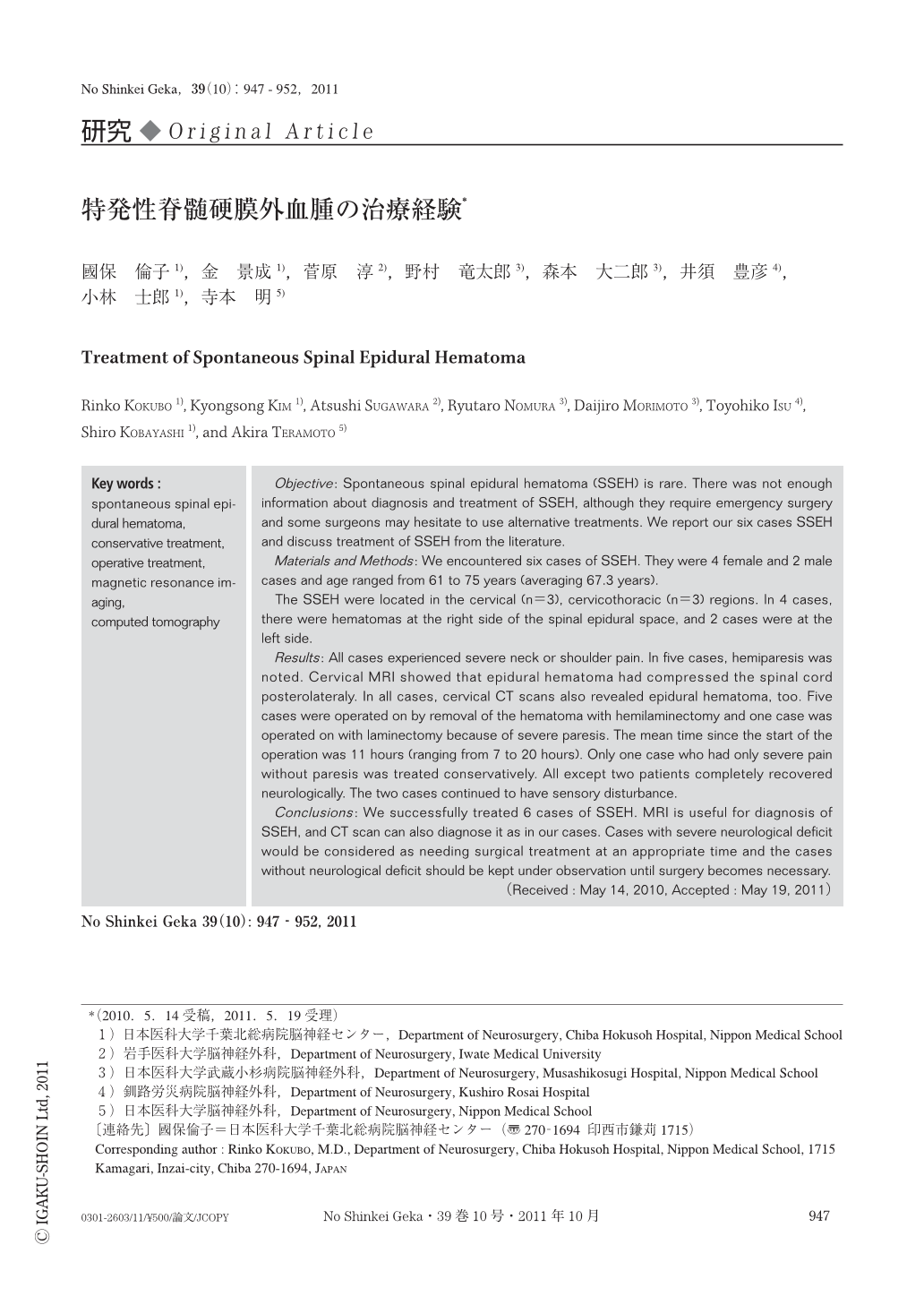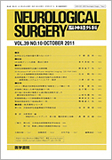Japanese
English
- 有料閲覧
- Abstract 文献概要
- 1ページ目 Look Inside
- 参考文献 Reference
Ⅰ.はじめに
脊髄硬膜外血腫は重篤な神経症状を呈することもあり,早期診断と治療は患者の機能予後に大きな影響を与える.好発部位は頚胸髄移行部および下位胸髄であり,頚髄硬膜外血腫は全体の18.7%とされているが,その死亡率は26.2%と有意に高く,その診断,治療には十分な注意が必要である6).今回われわれは誘因なく急性発症し,早期の手術治療により回復し得た5例,および保存的治療により治癒した1例の脊髄硬膜外血腫を経験したので,若干の文献的考察を加えて報告する.
Objective: Spontaneous spinal epidural hematoma (SSEH) is rare. There was not enough information about diagnosis and treatment of SSEH,although they require emergency surgery and some surgeons may hesitate to use alternative treatments. We report our six cases SSEH and discuss treatment of SSEH from the literature.
Materials and Methods: We encountered six cases of SSEH. They were 4 female and 2 male cases and age ranged from 61 to 75 years (averaging 67.3 years).
The SSEH were located in the cervical (n=3), cervicothoracic (n=3) regions. In 4 cases, there were hematomas at the right side of the spinal epidural space, and 2 cases were at the left side.
Results: All cases experienced severe neck or shoulder pain. In five cases, hemiparesis was noted. Cervical MRI showed that epidural hematoma had compressed the spinal cord posterolateraly. In all cases, cervical CT scans also revealed epidural hematoma, too. Five cases were operated on by removal of the hematoma with hemilaminectomy and one case was operated on with laminectomy because of severe paresis. The mean time since the start of the operation was 11 hours (ranging from 7 to 20 hours). Only one case who had only severe pain without paresis was treated conservatively. All except two patients completely recovered neurologically. The two cases continued to have sensory disturbance.
Conclusions: We successfully treated 6 cases of SSEH. MRI is useful for diagnosis of SSEH,and CT scan can also diagnose it as in our cases. Cases with severe neurological deficit would be considered as needing surgical treatment at an appropriate time and the cases without neurological deficit should be kept under observation until surgery becomes necessary.

Copyright © 2011, Igaku-Shoin Ltd. All rights reserved.


